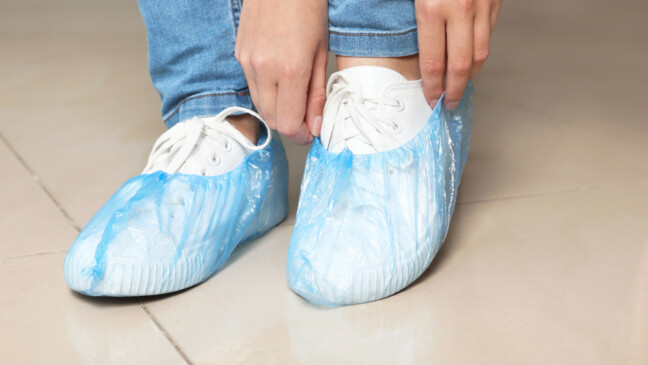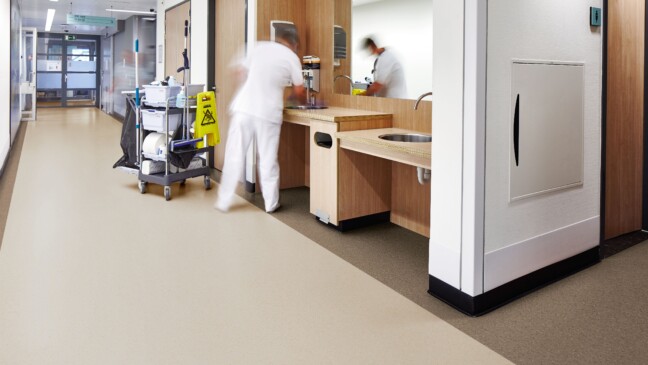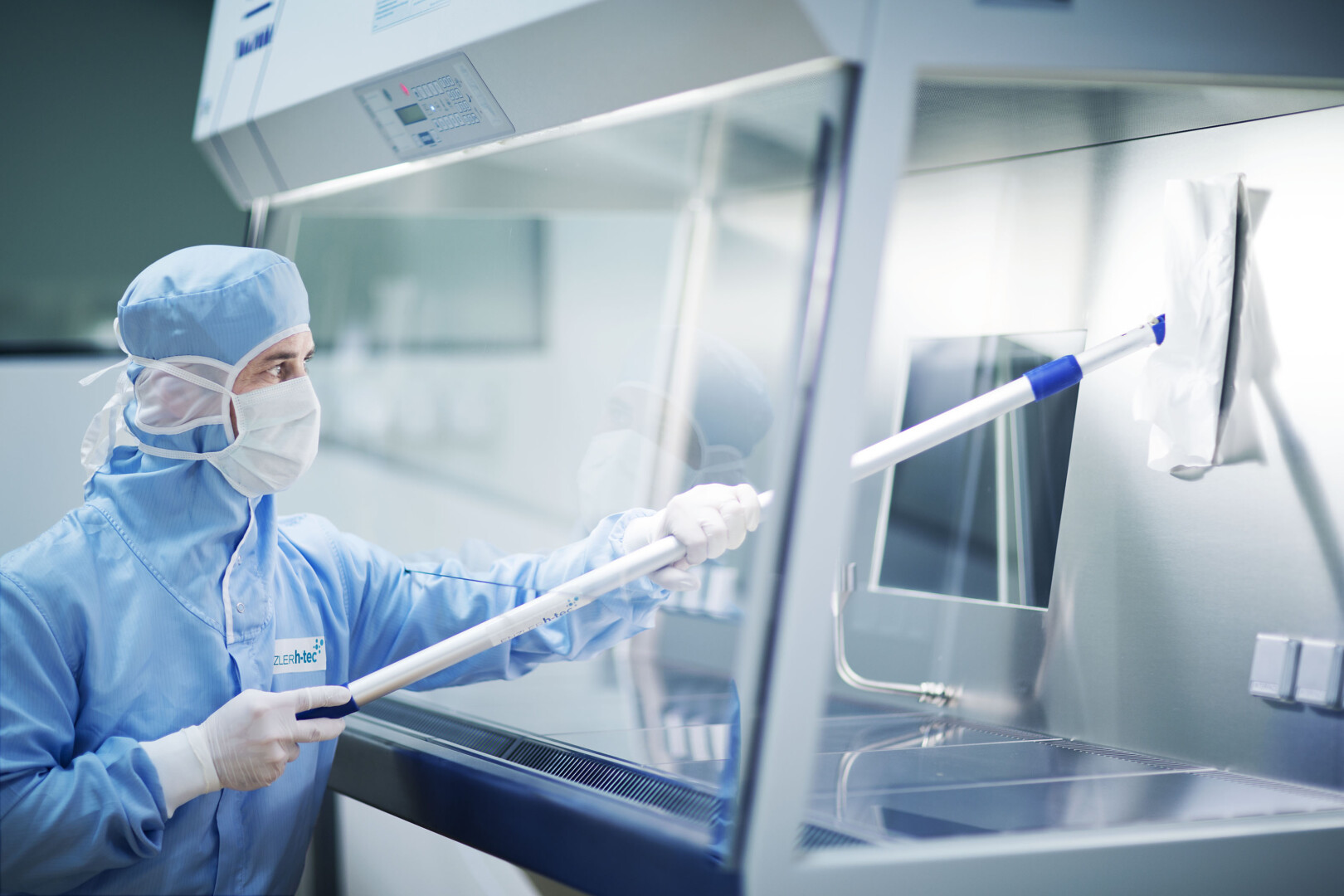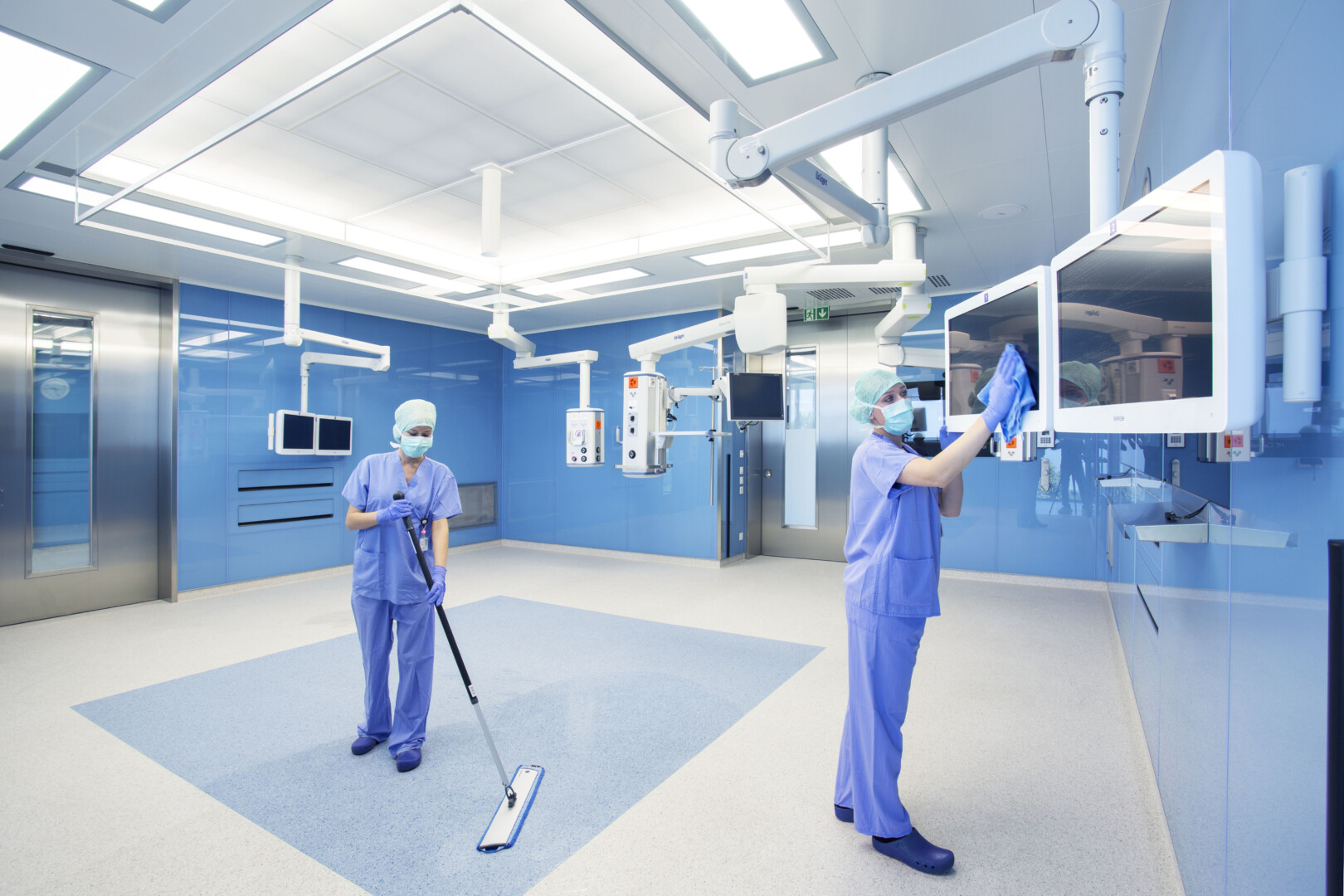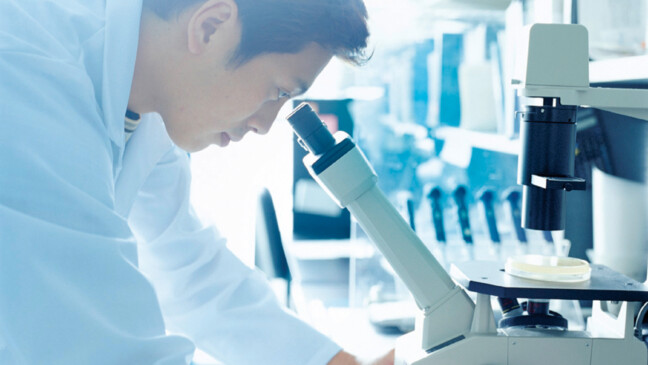
26.04.23
Apparition et risques du biofilm
Les biofilms sont omniprésents dans la vie organique. Ils peuvent présenter certains risques, comme les infections en milieu hospitalier et la consommation d'aliments contaminés. Seules des modifications des conditions physiques et de l'offre en nutriments permettent de réduire les biofilms.
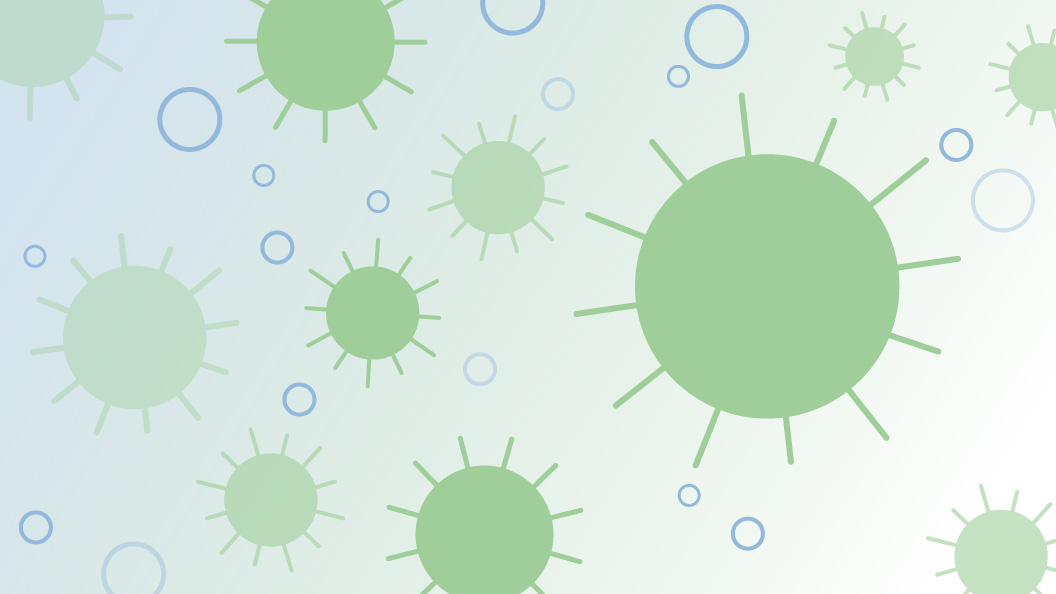
Résumé
Un biofilm est défini comme une communauté microbienne structurée composée majoritairement de bactéries et/ou de micro-organismes supérieurs, enfermés dans une matrice extracellulaire de polysaccharides (EPS = ExoPolySaccharide Matrix) qu’ils ont eux-mêmes produite et qui adhèrent à une surface biotique (vivante) ou abiotique (non vivante). Des micro-organismes planctoniques (par ex. des bactéries et/ou des champignons en solution) peuvent à leur tour s’y déposer et élargir le biofilm sessiles. En fonction de l’environnement spécifique, les biofilms sont des mélanges hétérogènes de composants biologiques et non biologiques.
Les gradients chimiques créés dans l’ensemble du biofilm permettent aux bactéries d’exister dans une variété d’états physiologiques, ce qui permet une meilleure adaptabilité à l’environnement changeant. Les biofilms peuvent être composés de plusieurs espèces et forment généralement une communauté spécialisée qui interagit et communique entre elles.
Dans le biofilm, les micro-organismes sont protégés par l’EPS contre les facteurs environnementaux défavorables, les désinfectants et également contre les réactions immunitaires. Par rapport aux cellules planctoniques, les cellules sessiles sont souvent beaucoup plus résistantes aux agents antimicrobiens et cette résistance accrue a une influence considérable sur le traitement des applications industrielles liées au biofilm ou des infections en milieu hospitalier. La formation de biofilm est souvent considérée comme la raison pour laquelle le traitement avec un agent antimicrobien (biocide et antibiotique) échoue. On estime que 65 à 80 % de toutes les infections dans le secteur des soins de santé sont liées à un biofilm, ce qui constitue un sérieux défi médical.
Il est établi que plusieurs mécanismes sont impliqués dans les propriétés de résistance antimicrobienne du biofilm, notamment le ralentissement de la pénétration et de la neutralisation de l’agent antimicrobien dans le biofilm. En outre, les modifications de l’environnement chimique et microbiologique à l’intérieur du biofilm, qui conduisent à des zones de croissance lente ou nulle. Une réaction adaptative au stress et la présence d’une petite population de cellules extrêmement résistantes (cellules persistantes) constituent un avantage sélectif décisif des communautés de biofilms microbiologiques par rapport aux microorganismes planctoniques.
Qu’est-ce que c’est un biofilm ?
L’IUPAC (International Union of Pure and Applied Chemistry) définit un biofilm comme suit: Un biofilm est un agrégat de micro-organismes dans lequel des cellules, souvent noyées dans une matrice de substances polymères extracellulaires (EPS) qu’elles ont elles-mêmes produites, adhèrent les unes aux autres et/ou à une surface. Un biofilm est un écosystème biologique qui peut être adapté en interne par ses habitants aux conditions environnementales. La matrice de substances polymères extracellulaires produite par les bactéries elles-mêmes, également appelée mucus, est un conglomérat polymère de molécules de sucre, d’acides nucléiques, d’enzymes et autres, généralement constitué de biopolymères extracellulaires de composition très variée.
Où trouve-t-on des biofilms?
Les biofilms sont omniprésents dans la vie organique. Presque tous les types de micro-organismes ont des mécanismes qui leur permettent d’adhérer aux surfaces et les uns aux autres. Les biofilms se forment sur pratiquement toutes les surfaces non répulsives dans des environnements aqueux ou humides non stériles. Les biofilms peuvent se développer dans des environnements extrêmes: par exemple dans l’eau très salée des sources chaudes, dans des environnements très acides à très alcalins, mais aussi dans l’eau gelée des glaciers et sur les glaciers. Les biofilms peuvent être trouvés sur les rochers et sur les galets au fond de la plupart des ruisseaux ou des rivières et se forment souvent à la surface des bassins d’eau stagnante. Les biofilms sont des éléments importants des chaînes alimentaires dans les rivières et les ruisseaux et sont broutés par les invertébrés aquatiques, dont se nourrissent à leur tour les poissons. Les biofilms se trouvent également à la surface et à l’intérieur des plantes.
En général, les biofilms se trouvent sur des surfaces naturelles ou artificielles, ainsi que sur et dans les êtres vivants, et peuvent conquérir avec succès presque toutes les niches écologiques. Voici quelques exemples marquants de biofilms ayant un rapport pratique ou issus de la vie quotidienne:
- Habitats à biofilms dans la nature: des biofilms bien visibles existent dans les ruisseaux et les rivières, dans les sources chaudes des parcs nationaux (parc national de Yellowstone) et dans les eaux stagnantes sous forme de tapis flottants, généralement colorés; ceci également en symbiose avec des habitants aquatiques supérieurs comme les algues.
- Installations et surfaces artificielles à grande échelle: Dans les filtres d’infiltration des stations d’épuration et dans les filtres à sable pour la purification de l’eau brute en vue de la fabrication d’un produit d’eau potable.
- À la maison: dans les environnements humides et chauds, les biofilms peuvent très facilement se développer dans les douches, car celles-ci offrent un environnement humide et chaud dans lequel ils peuvent parfaitement se développer.
- Dans les égouts: dans les canalisations d’eau et d’eaux usées, les biofilms peuvent provoquer des obstructions, de la corrosion et des problèmes d’odeur.
- Dans la cuisine: sur les sols et les comptoirs, ils peuvent rendre l’hygiène difficile dans les zones de préparation des aliments.
- Dans les systèmes d’eau de refroidissement ou de chauffage: Les biofilms peuvent réduire le transfert de chaleur et de froid et entraîner des pertes d’énergie. Ceci dans les petites installations ou également dans les tours de refroidissement des installations industrielles.
- Bio- et corrosion: les biofilms peuvent entraîner d’importants problèmes de corrosion dans les systèmes aquifères tels que les pipelines de l’industrie pétrolière et gazière offshore. Toutefois, la corrosion est principalement due à des facteurs abiotiques. Cependant, au moins 20% de la corrosion est causée par des micro-organismes qui se lient au support métallique (c’est-à-dire la corrosion influencée par les microbes).
- Sur les plantes: les rhizobactéries colonisent les racines des plantes en tant que microbes favorisant la croissance des plantes et offrent un large éventail de fonctions utiles à leur hôte: fixation de l’azote, suppression des agents pathogènes, propriétés antifongiques et dégradation des matières organiques.
- Intestin des mammifères: On pense que le système immunitaire favorise la formation de biofilms dans le gros intestin. Dans certaines hypothèses, l’appendice est considéré comme un réservoir de bonne flore intestinale et peut aider à réensemencer l’intestin. Des états modifiés ou perturbés de biofilms dans l’intestin sont également associés à des maladies telles que les maladies inflammatoires de l’intestin et le cancer de l’intestin.
- Sur les coques de bateaux: l’adhérence bactérienne sur les coques de bateaux sert de base au biofouling des navires de mer. Une fois qu’un film bactérien initial s’est formé, il est plus facile pour d’autres organismes marins tels que les balanes et, plus tard, les coquillages, de s’y fixer.
- Les stromatolithes: les stromatolithes sont des structures sédimentaires primitives formées en eau peu profonde par la capture, la fixation et la cimentation de grains de sédiments par des biofilms microbiens, notamment des cyanobactéries. Ils contiennent certains des plus anciens enregistrements de la vie sur Terre et continuent à se former aujourd’hui.
- Sur les dents sous forme de plaque dentaire: dans le corps humain, les biofilms sont présents sur les dents sous forme de plaque dentaire, où ils peuvent provoquer des caries et des maladies gingivales. Ces biofilms peuvent se trouver soit dans un état mou et non calcifié, qui peut être relativement éliminé avec des instruments dentaires, soit dans un état dur calcifié, qui est plus difficile à éliminer.
- Dans la biodécontamination: les biofilms peuvent également aider à éliminer les pollutions pétrolières des océans ou des systèmes aquatiques. Le pétrole est éliminé par les activités de dégradation des hydrocarbures de communautés de bactéries.
- Dans le cadre des maladies infectieuses: Il est bien connu que les biofilms sont impliqués dans un grand nombre d’infections microbiennes chez les mammifères et que l’on estime qu’ils représentent 80% de toutes les infections chez l’homme. Les processus infectieux dans lesquels les biofilms sont impliqués comprennent des problèmes aigus tels que la vaginose bactérienne, les infections urinaires, les infections liées aux cathéters, les otites, les gingivites, les biofilms sur les lentilles de contact et/ou les infections oculaires. Moins fréquentes, mais à l’issue potentiellement plus fatale, sont par exemple l’endocardite, les infections liées à la mucoviscidose et les infections sur des implants permanents tels que les prothèses articulaires, les valves cardiaques, les vis chirurgicales et les disques intervertébraux.
- En aquaculture: dans l’aquaculture des crustacés et des poissons classiques, certaines espèces de biofouling « supérieures » ont tendance à bloquer les filets et les cages, à les corroder, à les dégrader et, finalement, à concurrencer les espèces élevées pour l’espace et la nourriture. Les biofilms bactériens sont le point de départ du processus de colonisation, en créant des environnements biologiques favorables aux espèces de biofouling.
- Dans l’industrie alimentaire: les biofilms sont problématiques dans différentes industries alimentaires, car ils peuvent se former sur les plantes, les précurseurs d’aliments ainsi que sur les aliments finis pendant le processus de production. Les bactéries peuvent survivre longtemps dans l’eau, les restes d’animaux et le sol et provoquer la formation de biofilms sur les parties transformées des plantes ou dans les installations de transformation et de production. Outre les problèmes économiques, la formation de biofilms sur les aliments représente un risque majeur pour la santé des consommateurs, car les germes présents dans les biofilms peuvent être plus résistants aux désinfectants et aux antibiotiques à proximité des aliments. Les biofilms ont été associés à jusqu’à 80% des infections alimentaires bactériennes. En raison de la nature périssable des produits laitiers et des limites des méthodes de nettoyage, les laiteries sont particulièrement exposées à la formation de biofilms et aux contaminations.
Quels sont les germes qui forment des biofilms ?
De nombreuses bactéries différentes forment des biofilms, y compris des bactéries à Gram positif (par exemple Bacillus spp., Listeria monocytogenes, Staphylococcus spp. et des bactéries lactiques telles que Lactobacillus plantarum et Lactococcus lactis) et également des espèces à Gram négatif (par exemple Escherichia coli, Salmonella spp. ou Pseudomonas aeruginosa). Les cyanobactéries forment également des biofilms dans les environnements aquatiques.
Des biofilms sont également formés par des bactéries à proximité des plantes, par exemple Pseudomonas putida, Pseudomonas fluorescens et des Pseudomonas apparentées, qui sont considérées comme des bactéries associées aux plantes. Plusieurs symbiotes fixateurs d’azote de légumineuses, tels que Rhizobium leguminosarum et Sinorhizobium meliloti, forment des biofilms sur les racines des plantes et d’autres surfaces inertes.
Outre les bactéries, les biofilms sont également formés par des archées et une série d’organismes eucaryotes, dont des champignons comme Cryptococcus laurentii et des microalgues. Parmi les microalgues, les diatomées sont les principaux représentants des biofilms, qui colonisent les environnements d’eau douce et marins dans le monde entier.
Quelques exemples – non exhaustifs – de germes présentant des biofilms associés à des maladies, qui se développent sur ou dans les eucaryotes, sont Pseudomonas aeruginosa, Streptococcus pneumoniae, Escherichia coli et Staphylococcus aureus.
Quels sont les dangers des biofilms ?
En principe, les biofilms présentent les dangers généraux suivants :
- problèmes de santé dus à des infections dans l’environnement hospitalier et à la consommation d’aliments contaminés
- endommagement, destruction ou diminution de l’efficacité des installations et des matériaux en raison de la dégradation bactérienne des matériaux, de la corrosion ou de l’obstruction ainsi que de la réduction du transfert d’énergie.
- problèmes d’odeur et de dégradation visuelle des matériaux dus aux biofilms
Comment éliminer les biofilms ?
Les biofilms, une fois qu’ils ont atteint une épaisseur substantielle, ne peuvent généralement être éliminés que par l’application d’une force physique, suivie d’un nettoyage minutieux, en combinaison avec des mesures d’hygiène et de désinfection.
Toutefois, l’élimination du biofilm dans un système ouvert n’est pas une situation durable. La nature récupère son environnement écologique naturel ou créé par l’homme.
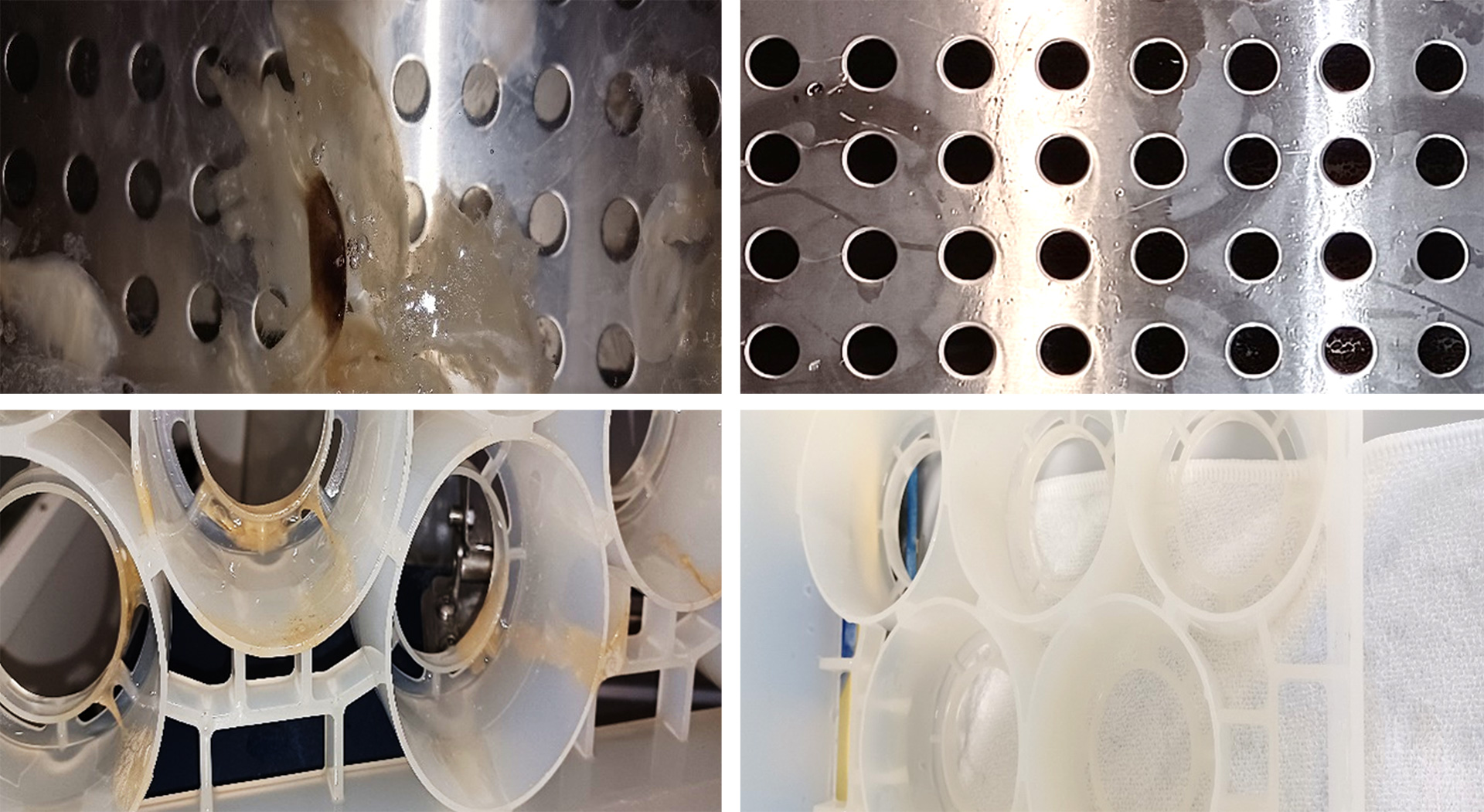
Comment éviter les biofilms?
Les biofilms se forment sur presque toutes les surfaces ou niches écologiques et ne peuvent être réduits qu’en modifiant les conditions physiques et l’offre en nutriments. La compréhension des raisons de la formation des biofilms, des mesures d’hygiène appropriées et un nettoyage et une désinfection réguliers combinés à des mesures de contrôle adéquates permettent d’empêcher les biofilms ou du moins de contrôler leur développement.
Des approches récentes visent à rendre les surfaces non attractives pour les biofilms par des modifications physico-chimiques ou à les équiper d’un traitement antimicrobien. La dissolution de la matrice du biofilm par des enzymes ou la communication bactérienne (quorum sensing) sont également des stratégies récentes envisagées.
Littérature
- https://www.biofilm.montana.edu/
- S.C. Chew, L. Yang, in Encyclopedia of Food and Health, 2016
- T. Coenye, in Brenner’s Encyclopedia of Genetics (Second Edition), 2013
- https://www.sciencedirect.com/topics/immunology-and-microbiology/biofilm
